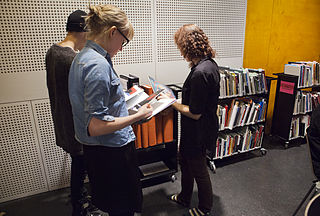Design : traduire les concepts avec des images et du texte
Images et textes opératifs en design : énoncer, traduire les concepts, en et hors contexte
Operational Images and Texts in Design: Stating and Translating Concepts, In and Out of Context
Éric Tortochot, Véronique Rey et Christina Romain
Résumé (en français puis en anglais)
Comment l’absence de co-construction graphique entre le client et les rédacteurs professionnels peut conduire à une rupture de mandat par le client ? Comment cette rupture pourrait s’expliquer par le processus de décontextualisation ?
Les images et textes qui constituent les formes d’énonciation du designer sont des instruments opératifs propices à traduire les concepts émergeant au sein d’un projet de design. La traduction des concepts est mise à l’épreuve d’une suite de passages au fur et à mesure de l’évolution des besoins du client. Ces gestes qui conduisent à des représentations et à des formes d’énonciation d’états désirés d’un artefact, à savoir un objet fabriqué par l’homme, sont adressés à plusieurs interlocuteurs, spécialistes ou non de la conception. Les documents sont des informations sur l’artefact, de natures verbales et non verbales, de type technique, conceptuel, esthétique, professionnel. Leurs « traductions » constituent une assistance ou un obstacle à la compréhension des modèles produits par les designers. Afin d’illustrer les contraintes en jeu dans une activité de conception, cette étude s’appuie sur un cas concret qui implique des allers-retours énonciatifs (reformulation, transmutation et transposition). Il s’agit d’une commande de design graphique pour des fiches d’information aboutissant à un échec, une rupture de mandat.
Les entretiens courriel, un entretien audio et les productions graphiques constituent le corpus d’analyse. L’approche est pluridisciplinaire (sciences cognitives et sciences du langage). Elle permet d’objectiver l’absence de représentation partagée, c’est-à-dire de « traduction énonciative ». Cette traduction énonciative n’a pas lieu car les interactions langagières ne tiennent compte ni des informations techniques ni du corpus terminologique propre à l’entreprise. « L’écart de traduction énonciative » entre le mandat réalisé et la réponse graphique est trop important pour permettre au système d’intercompréhension de fonctionner.
L’adaptation de l’écriture graphique au service du client n’est pas réalisée. L’échec du mandat s’explique donc par une absence d’élaboration d’une représentation partagée (via les concepts du design) et illustre ainsi la nécessité de cette traduction énonciative entre les interlocuteurs.
The images and texts that make up the designer’s forms of utterance are operational instruments
for translating the emerging concepts within a design project. The translation of concepts is
tested through a series of passages as needs evolve. These gestures or movements, which lead to
representations and forms of utterance of the artifact’s desired shapes, are addressed to several
interlocutors, whether or not they are design specialists. The documents are verbal and nonverbal
information about the artefact, of a technical, conceptual, aesthetic or professional
nature. Their “translations” are an assistance or an obstacle to the understanding of the shapes
produced by the designers. In order to illustrate the specification at stake in a design activity,
this study is based on an actual case involving uttered back-and-forth (reformulation,
transmutation and transposition). This is a graphic design order for information sheets resulting
in a failure, a stop of client order. Email interviews, audio interviews and graphic productions
provide the corpus of analysis. The approach is multidisciplinary (cognitive and language
sciences). It makes it possible to objectify the absence of shared representation, i.e. “enunciative
translation”. This uttered translation does not take place because language interactions do not
take into account either technical information or the specific terminological corpus of the
company. The “translation gap” between the completed order and the graphic response is too
large to allow the inter-comprehension system to function. The adaptation of the graphic writing
to serve the client is not carried out. The failure of the order can therefore be explained by a lack
of development of a shared representation (via design concepts) and thus illustrates the need for
this uttered enunciative translation between the interlocutors.
Le dossier complet « Traduction & Design » de la revue Appareil est en ligne :
https://journals.openedition.org/appareil/4218
Le lien pour accéder à l’article : https://journals.openedition.org/appareil/4617
Mots-clefs
Mots-clés : interactions langagières, design, traduction énonciative, images opératives
Keywords : language interactions, design, enunciative translation, operational images



